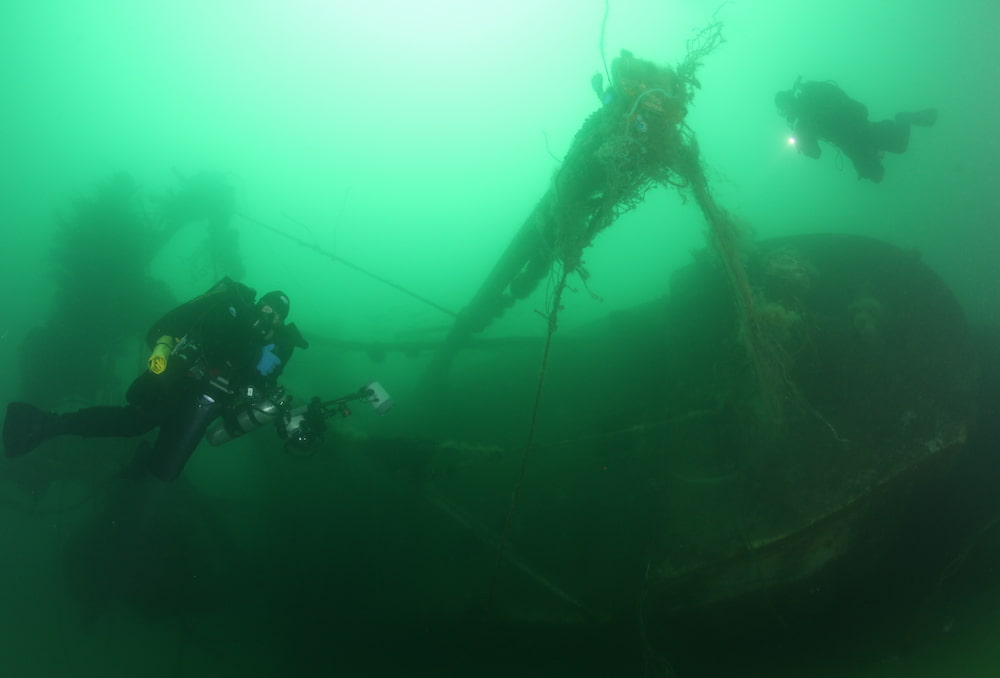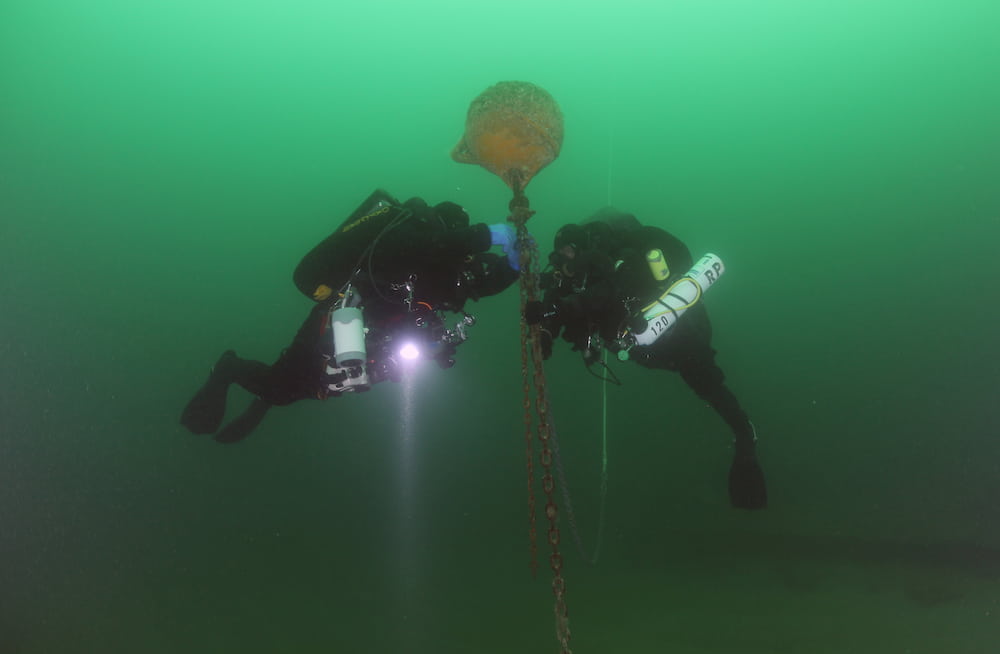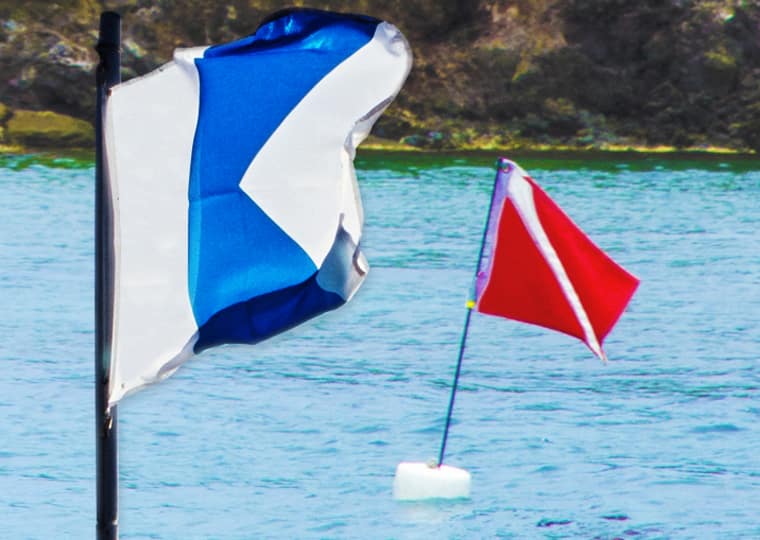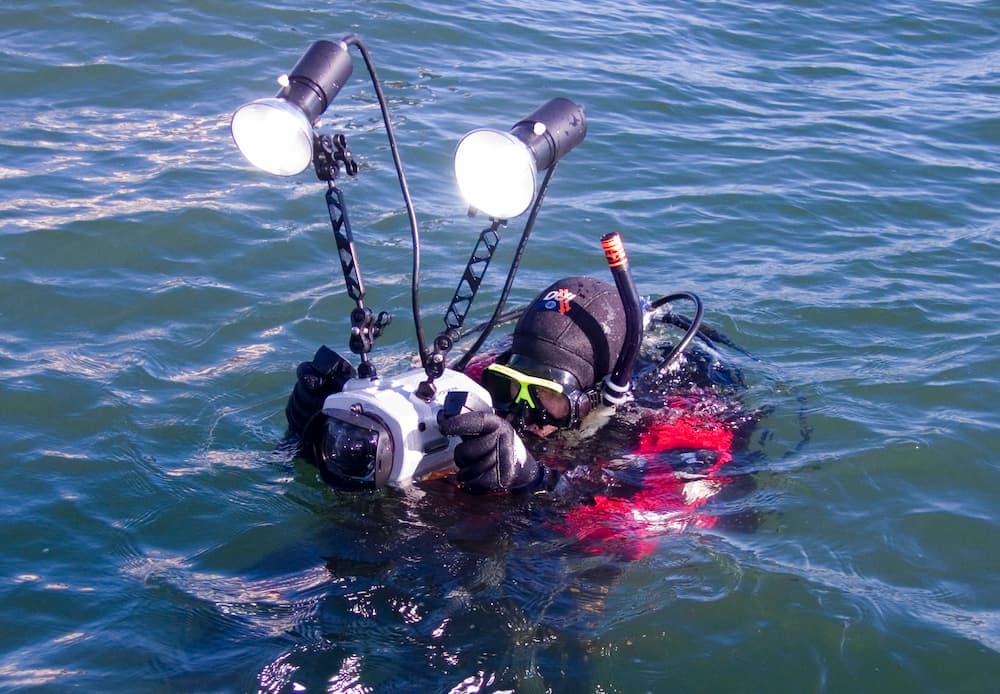
The sanctuary offers scuba divers a chance to explore an exciting offshore environment at the mouth of Massachusetts Bay. Exposed waters create challenging dive conditions but offer rewarding experiences. Although most of the sanctuary is deeper than the recommended recreational scuba diving depth limits, some 15%, or 126 square miles, is shallower than 130 feet at low tide. Much of that area lies atop Stellwagen Bank, with the rest on southern Jeffreys Ledge and the top of Sanctuary Hill.
Different dive sites support different communities of life; plan your dive.
In addition to deep, cold water that rarely rises above 50 degrees Fahrenheit, you will likely experience strong currents at the surface and the bottom, especially if the wind and tide are moving in the same direction. Plan your dive around slack tide for the best underwater and surface conditions. Watch for hazards, especially fishing gear. Gill nets in the water column pose the greatest entanglement threat to divers because they are hard to see and are hard to remove. Additionally, monofilament lines, lobster pot lines and trawl nets can also ensnare divers. Be particularly aware of your surroundings. Fishermen and boaters in the area may not be aware of divers in the water.
The sanctuary works with the dive community to install mooring buoys at dive sites in an effort to protect the sites from inadvertent damage from anchoring. Boat operators should work with their dive team leaders to tie onto these subsurface moorings located in proximity to sensitive dive sites.



Although diving is allowed throughout the sanctuary, regulations are in place to protect historic resources and marine mammals. Under 15 CFR 922.142, divers are not permitted to grapple a shipwreck, drop a down line directly onto a shipwreck, or tie a down line onto any part of a shipwreck. Divers are also not allowed to leave an unattended mooring in the sanctuary at any time or remove any object from a historic resource.
Diving when in the vicinity of whales is considered harassment and is punishable under federal law. Any boating activity that harms or causes a whale to change its behavior is also a violation of the Marine Mammal Protection Act and the Endangered Species Act, if applicable.
For a detailed listing of sanctuary regulations, visit our Manage Section.